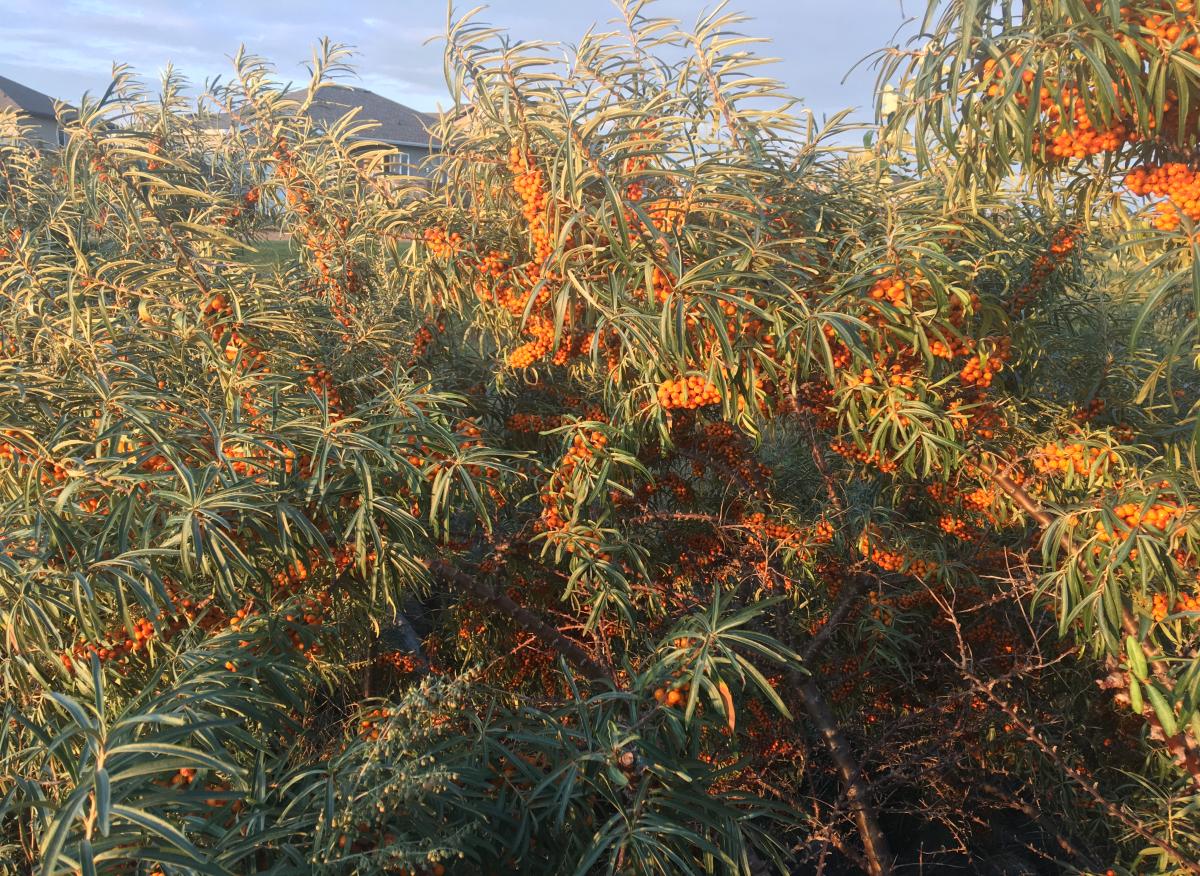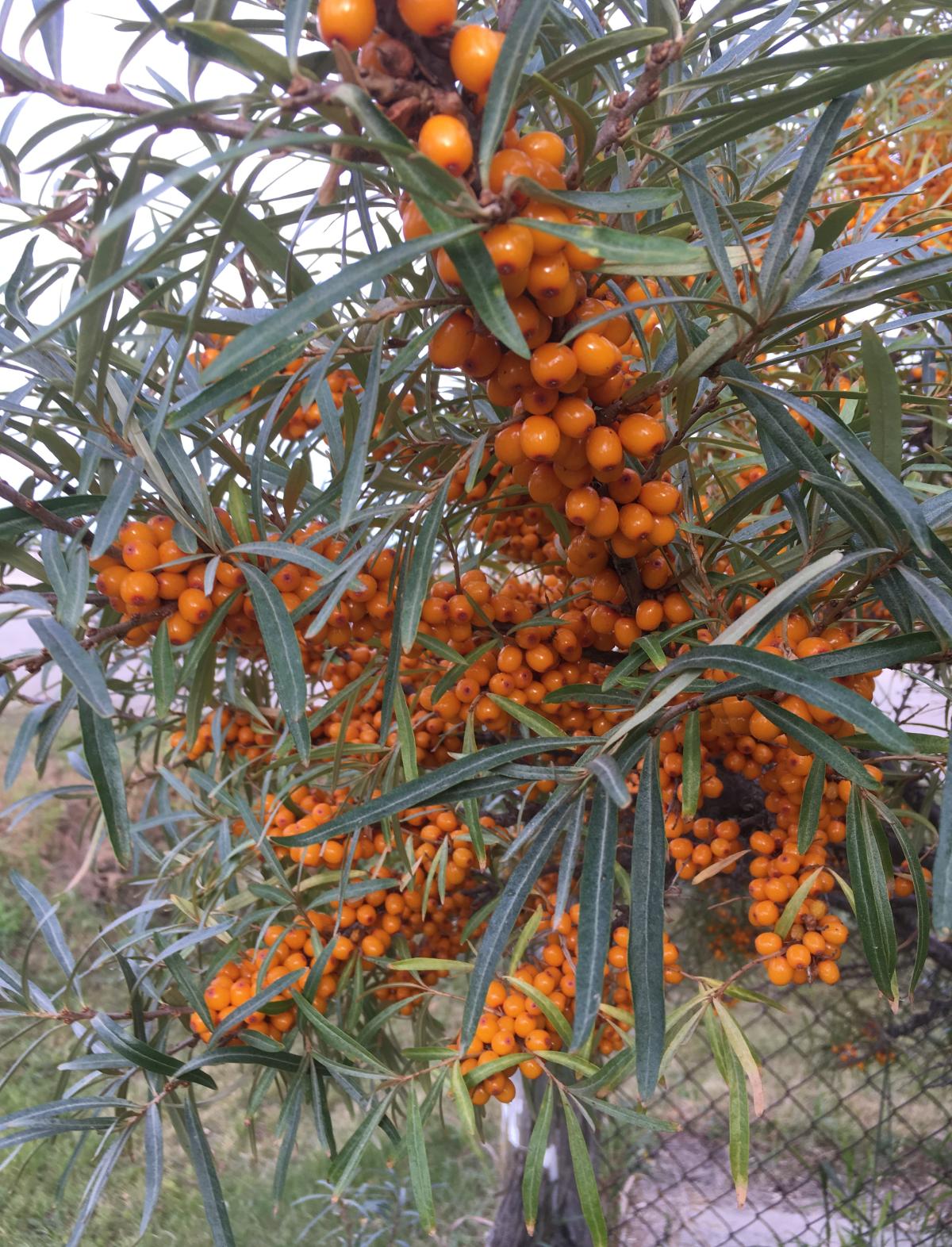
Sea buckthorn
Hippophaes rhamnoides

We don’t use the color orange nearly often enough in our gardens, and the vivid orange fall and winter berries of these plants are beautiful and very welcome! Sea buckthorns want to be in full sun and average to poor, well drained soil. They will sucker profusely and make dense, attractive thickets of silvery foliage, requiring nothing once they are established. As such, they are better suited to larger areas rather than small urban yards.
Sea buckthorns produce male and female flowers on separate plants; therefore you need two in order to produce fruit. The foliage is handsome, and sea buckthorn makes wonderful hedges and windbreaks. Plant this shrub as a barrier; it produces long, deadly sharp spines and when full grown, a hedge of these is nearly impenetrable. The berries persist all through the winter and are loved by birds and a variety of other wildlife, including people.
Although difficult to pick (due to the spines!) sea buckthorn berries are sweet, richly flavored, and taste a little bit like pineapple. They are also very high in Vitamin C and make fabulous jellies, jams, pies, and ice cream toppings. Coming to us from cold parts of Europe and Asia, sea buckthorns have learned to grow near the coast by being extremely tolerant of salt spray. This makes them good choices for planting along boulevards, parking lots, and other less than ideal places. They are known to fix nitrogen in the soil in the same fashion as some legumes, and although they can be slow to establish, they are reasonably fast growing once they do.
Hardy to zone 2.

